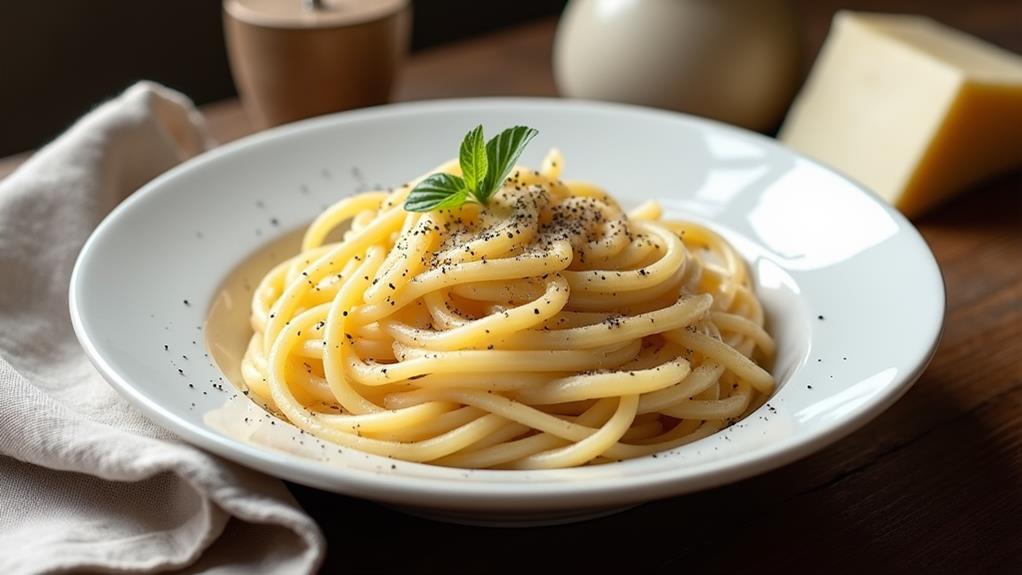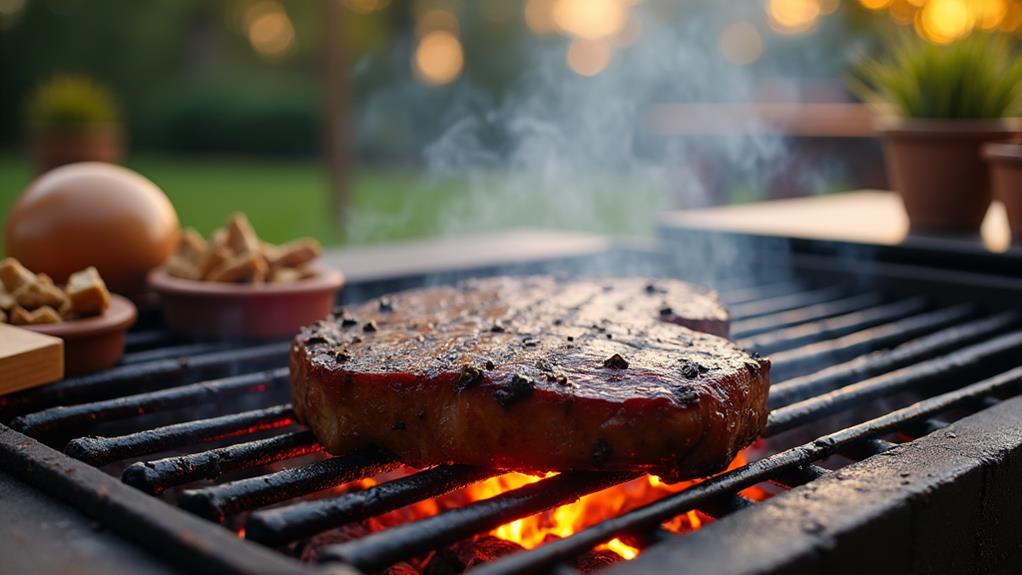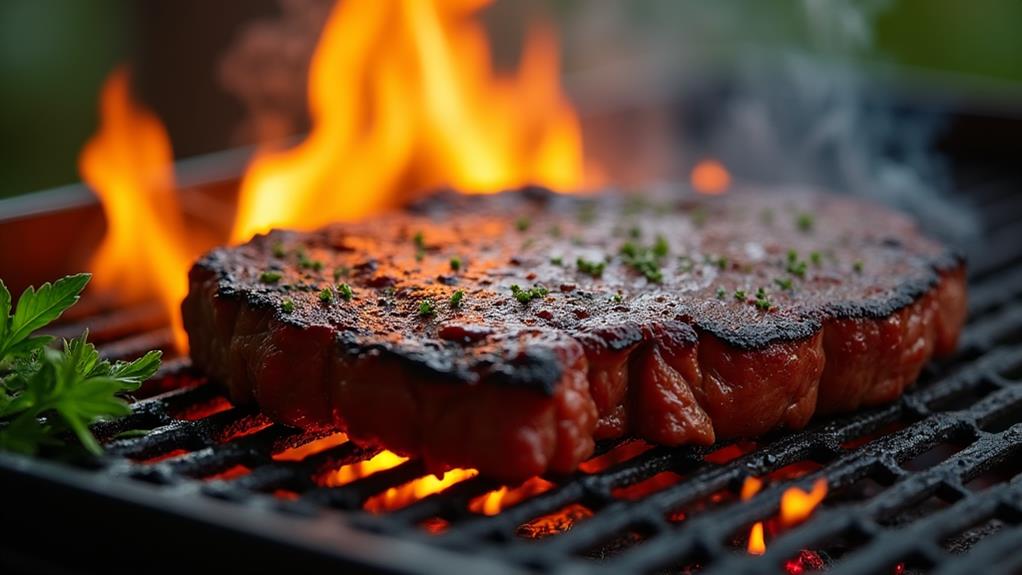You've probably heard of Cacio e Pepe, the iconic Roman pasta dish that's taken the culinary world by storm. It's a testament to the power of simplicity in Italian cooking, using just a handful of ingredients to create a meal that's both comforting and sophisticated. But don't be fooled by its apparent ease—mastering this dish requires finesse and technique. As you consider adding Cacio e Pepe to your repertoire, you'll discover there's more to this seemingly simple pasta than meets the eye. The history, the perfect recipe, and the crucial steps to achieve that silky, peppery sauce are all part of the journey.
Key Takeaways
- Cacio e Pepe requires only a few high-quality ingredients: pasta, Pecorino Romano, Parmigiano-Reggiano, black pepper, and pasta water.
- Toasting freshly ground black pepper enhances its flavor and aroma in the dish.
- Mastering the emulsification technique is crucial for creating a smooth, creamy sauce without clumps.
- Cook pasta al dente and vigorously toss with the sauce, adding pasta water to achieve the perfect consistency.
- Garnish with extra grated cheese for added flavor and visual appeal, serving immediately for the best taste and presentation.
History
While the exact origins of Cacio e Pepe are unclear, this simple pasta dish has deep roots in Roman cuisine.
It's believed to have originated with shepherds in the Roman countryside, who needed a hearty meal that could be easily prepared with non-perishable ingredients. The shepherds would carry dried pasta, aged pecorino cheese, and black peppercorns on their journeys, combining these simple ingredients to create a satisfying meal.
Over time, Cacio e Pepe evolved from a humble shepherd's dish to a beloved staple in Roman trattorias. Its popularity has grown beyond Italy's borders, becoming a favorite among pasta enthusiasts worldwide.
The dish's enduring appeal lies in its simplicity and the way it showcases the quality of its few ingredients. As you prepare Cacio e Pepe, you're not just cooking a meal; you're participating in a culinary tradition that spans centuries.
Recipe
Cacio e Pepe is a classic Roman pasta dish that showcases the beauty of simplicity in Italian cuisine. With just a handful of ingredients, this dish creates a creamy, peppery sauce that clings to each strand of pasta, resulting in a luxurious and satisfying meal.
Despite its simplicity, Cacio e Pepe requires attention to detail and proper technique to achieve the perfect balance of flavors and textures. The key lies in using high-quality ingredients and mastering the art of emulsification to create a silky smooth sauce without any clumping or graininess.
Ingredients:
- 1 pound (450g) spaghetti or bucatini
- 1 1/2 cups (150g) finely grated Pecorino Romano cheese
- 1 1/2 cups (150g) finely grated Parmigiano-Reggiano cheese
- 2 tablespoons (30ml) extra-virgin olive oil
- 2 teaspoons (5g) freshly ground black pepper
- Salt for pasta water
Bring a large pot of salted water to a boil and cook the pasta until al dente, reserving 1 1/2 cups of pasta water before draining. In a large skillet, toast the black pepper over medium heat until fragrant. Add 1 cup of the reserved pasta water and bring to a simmer. Gradually whisk in the grated cheeses, stirring constantly to create a smooth sauce.
Add the cooked pasta to the skillet and toss vigorously, adding more pasta water as needed to achieve a creamy consistency. Finish with a drizzle of olive oil and serve immediately.
For best results, use freshly grated cheese rather than pre-grated varieties, as they melt more smoothly and create a creamier sauce. Be sure to cook the pasta slightly less than al dente, as it will continue to cook when tossed with the sauce.
If the sauce becomes too thick, add small amounts of pasta water to loosen it up. Lastly, serve the pasta in warmed bowls to keep it at the perfect temperature and consistency throughout the meal.
Cooking Steps
To create the perfect Cacio e Pepe, you'll need to follow a series of carefully orchestrated steps.
You'll begin by boiling water for your pasta and toasting black pepper to release its aromatic oils.
As the pasta cooks, you'll create a creamy cheese sauce, toss the al dente pasta with this luxurious mixture, and finally garnish your dish with a sprinkle of extra cheese for that finishing touch.
Step 1. Boil Water for Pasta
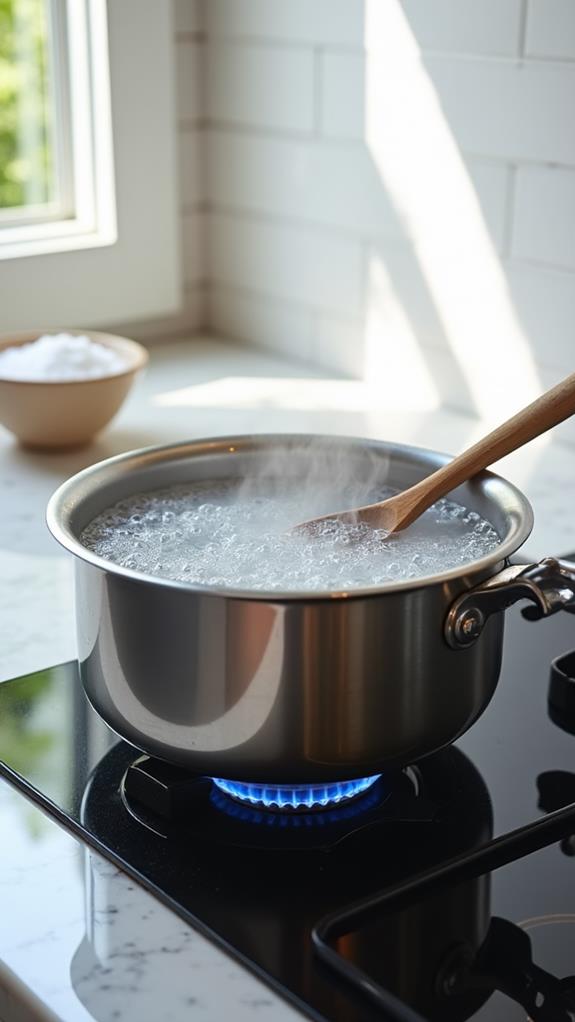
The first step in preparing Cacio e Pepe is to boil the pasta water. You'll need a large pot to ensure there's plenty of room for the pasta to move freely as it cooks. Fill the pot with cold water, leaving enough space at the top to prevent boiling over.
Place it on your stove's largest burner and turn the heat to high. As the water heats up, add a generous amount of salt. Don't be shy; the water should taste like the sea. This salting step is crucial, as it's your only chance to season the pasta itself.
Once the water reaches a rolling boil, carefully add your pasta. Use long noodles like spaghetti or bucatini for authentic Cacio e Pepe. Stir immediately to prevent sticking, then occasionally throughout cooking. Set a timer for about one minute less than the package instructions suggest, as you'll finish cooking the pasta in the sauce.
While the pasta boils, prepare your cheese and pepper mixture. When the timer goes off, reserve some pasta water before draining.
Step 2. Toast Black Pepper
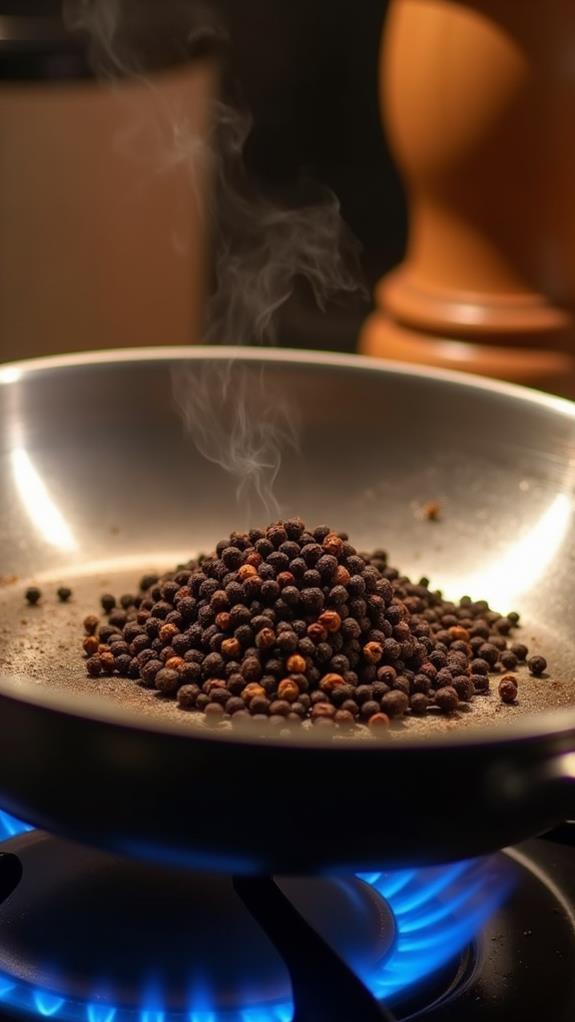
While your pasta is cooking, it's time to focus on the key flavor component of Cacio e Pepe: the black pepper. In a large skillet over medium heat, add your freshly ground black pepper. You'll need about two teaspoons for this recipe.
As the skillet warms up, you'll notice the pepper's aroma intensifying. This process, known as toasting, releases the pepper's essential oils, enhancing its flavor and aroma.
Gently shake the skillet or use a wooden spoon to move the pepper around, ensuring it toasts evenly without burning. You'll know it's ready when the fragrance becomes noticeably stronger and more complex, typically after about 30 seconds to a minute.
Be careful not to over-toast, as this can result in a bitter taste. Once toasted, immediately add one cup of the reserved pasta water to the skillet. This will cool the pan and stop the pepper from burning while also creating the base for your sauce.
The hot water will help to further release the pepper's flavors, infusing the liquid with its distinct taste and aroma.
Step 3. Create Cheese Sauce
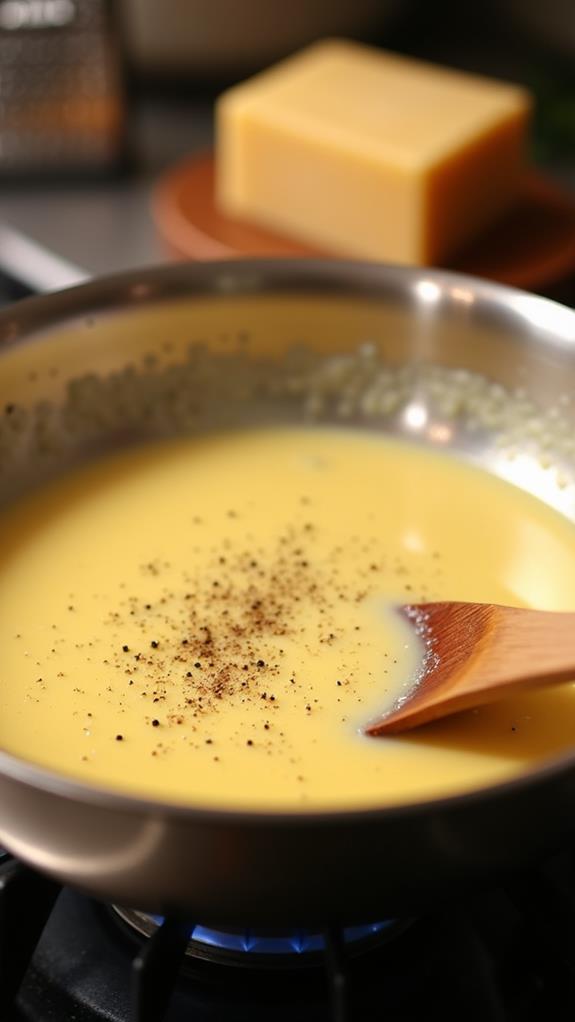
After adding the pasta water to the skillet with toasted pepper, you'll create the signature creamy sauce that defines Cacio e Pepe. Gradually whisk in the grated Pecorino Romano and Parmigiano-Reggiano cheeses, stirring constantly to ensure a smooth consistency.
As you add the cheese, you'll notice the sauce begin to thicken and emulsify. It's crucial to maintain a steady whisking motion to prevent the cheese from clumping or becoming grainy. If the sauce seems too thick, don't hesitate to add more pasta water, a little at a time, until you achieve the desired consistency.
The goal is a silky, creamy sauce that will coat each strand of pasta perfectly. Once your sauce has reached the right texture, it's time to add the cooked pasta to the skillet. Toss the pasta vigorously with the sauce, ensuring that every noodle is well-coated.
This step is essential for distributing the flavors evenly and creating that quintessential Cacio e Pepe experience. Remember, the pasta will continue to absorb the sauce, so work quickly to maintain the ideal consistency.
Step 4. Toss Pasta With Sauce
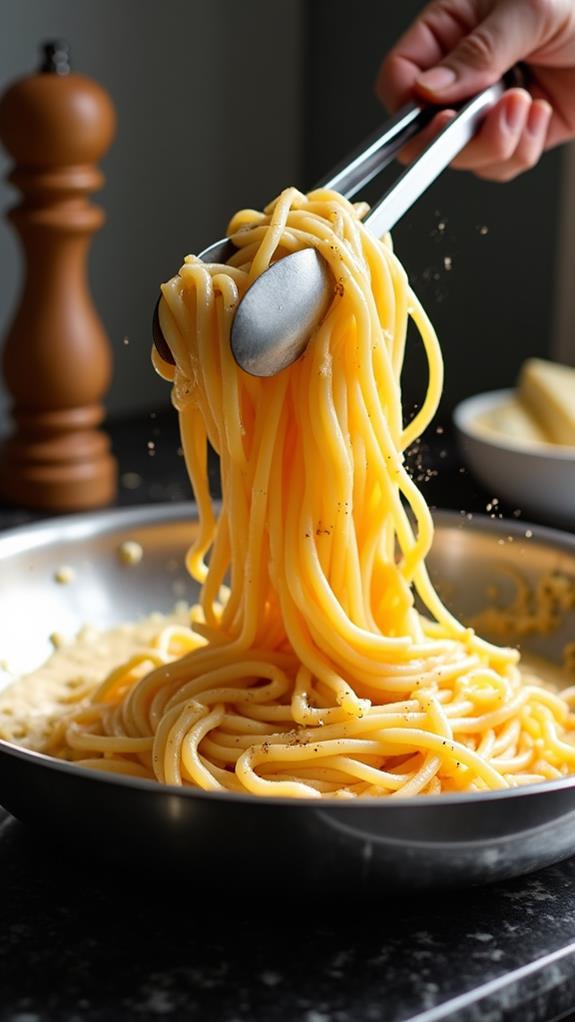
Once your creamy cheese sauce is ready, it's pasta-tossing time. Transfer your al dente pasta directly from the pot to the skillet with the sauce, using tongs or a pasta fork. Don't worry if some pasta water clings to the noodles; this extra moisture will help create the perfect consistency.
Now, it's time to get your arm workout in. Vigorously toss the pasta with the sauce, using a back-and-forth motion to coat each strand evenly. As you toss, you'll notice the sauce becoming silky and clinging to the pasta.
If the mixture seems too thick, gradually add small amounts of the reserved pasta water, continuing to toss until you achieve the desired consistency.
Keep tossing for about two minutes, or until the pasta is perfectly coated and the sauce has a glossy appearance. The heat from the pasta and the constant motion will help emulsify the sauce, creating a harmonious blend of cheese, pepper, and starchy pasta water.
Once you're satisfied with the consistency and coverage, it's time to plate and serve your Cacio e Pepe immediately, ensuring you enjoy it at its peak creaminess and flavor.
Step 5. Garnish With Extra Cheese
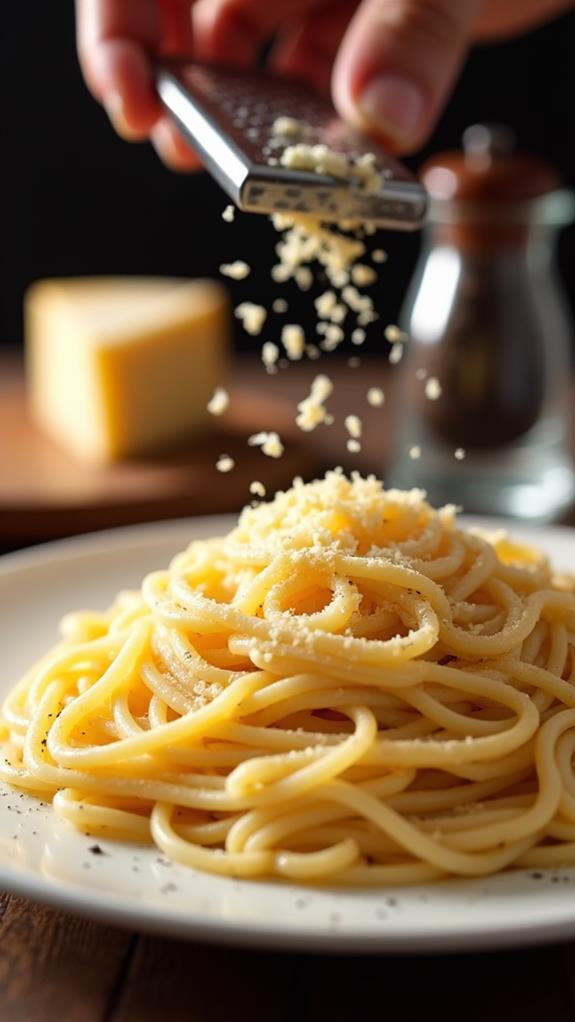
As a final touch to your Cacio e Pepe, you'll want to garnish with extra cheese. This step isn't just for presentation; it adds an extra layer of flavor and texture to your dish. Grate some additional Pecorino Romano or Parmigiano-Reggiano cheese over the top of your pasta, using a fine grater for a delicate, snow-like appearance.
You'll want to do this immediately before serving, as the heat from the pasta will slightly melt the cheese, creating a tantalizing aroma. Don't be shy with the cheese; a generous sprinkle will enhance the dish's richness.
However, be careful not to overdo it, as too much cheese can overpower the delicate balance of flavors. If you're feeling adventurous, you can also add a final crack of fresh black pepper for an extra punch. Remember, the goal is to complement the existing flavors, not mask them.
As you garnish, take a moment to appreciate the simplicity and elegance of your Cacio e Pepe. This final touch elevates the dish from a humble pasta to a restaurant-worthy creation, sure to impress your guests or satisfy your own culinary cravings.
Final Thoughts
Cacio e Pepe's elegance lies in its simplicity and attention to detail. As you master this classic Roman dish, you'll appreciate how a few high-quality ingredients can create a truly exceptional meal.
Remember, the key to success is in the technique. Don't rush the process of emulsifying the cheese and pasta water; take your time to achieve that silky smooth sauce.
You'll find that practice makes perfect with Cacio e Pepe. Each time you prepare it, you'll gain more confidence in your ability to balance the flavors and textures.
Don't be discouraged if your first attempt isn't flawless; even experienced chefs sometimes struggle with this deceptively simple dish. As you become more familiar with the recipe, you'll develop an intuitive sense of when to add more pasta water or how vigorously to toss the pasta.
You'll also discover your personal preferences for cheese ratios and pepper intensity. Ultimately, Cacio e Pepe is a testament to the beauty of Italian cuisine, where simplicity and quality ingredients reign supreme.
Enjoy the process of perfecting this timeless dish, and savor each creamy, peppery bite.

